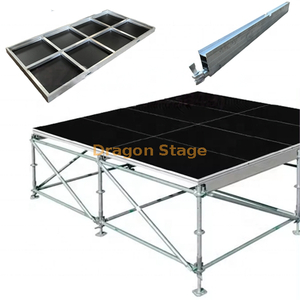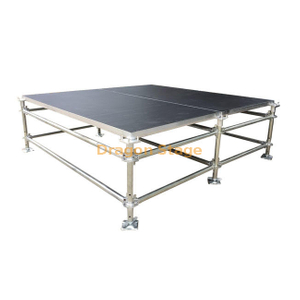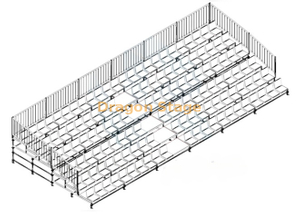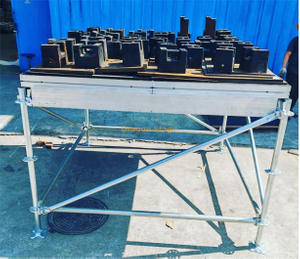
How To Install Led Display on The Layher Truss System. mainly speaking, the ways to install led screen on the layher strucuture fall into 4 kinds. the first kind is hanging type, namely using bumper hanging led screen on the bumper and hanging bumpers onto the layher structure; the second kind is fixing installation type, namely using fixing parts attach led screen onto the layher; the third kind is stacking & fixing, namely stack the led screen from stage platform and fixing with parts to the layher structure; the fourth kind is stacking & hanging, namely stack the led screen from a suspened supporting stage and hanging with bumper from overhead truss.
Integrating LED Displays with Layher Truss Systems: A Comprehensive Guide to Installation Methods
The Layher truss system, renowned for its robust construction and adaptability, provides a versatile platform for integrating LED displays in various events and installations. This essay will delve into the four primary methods for mounting LED screens onto Layher structures, analyzing their characteristics and suitability for different applications.
1. Hanging Type: A Versatile and Efficient Solution
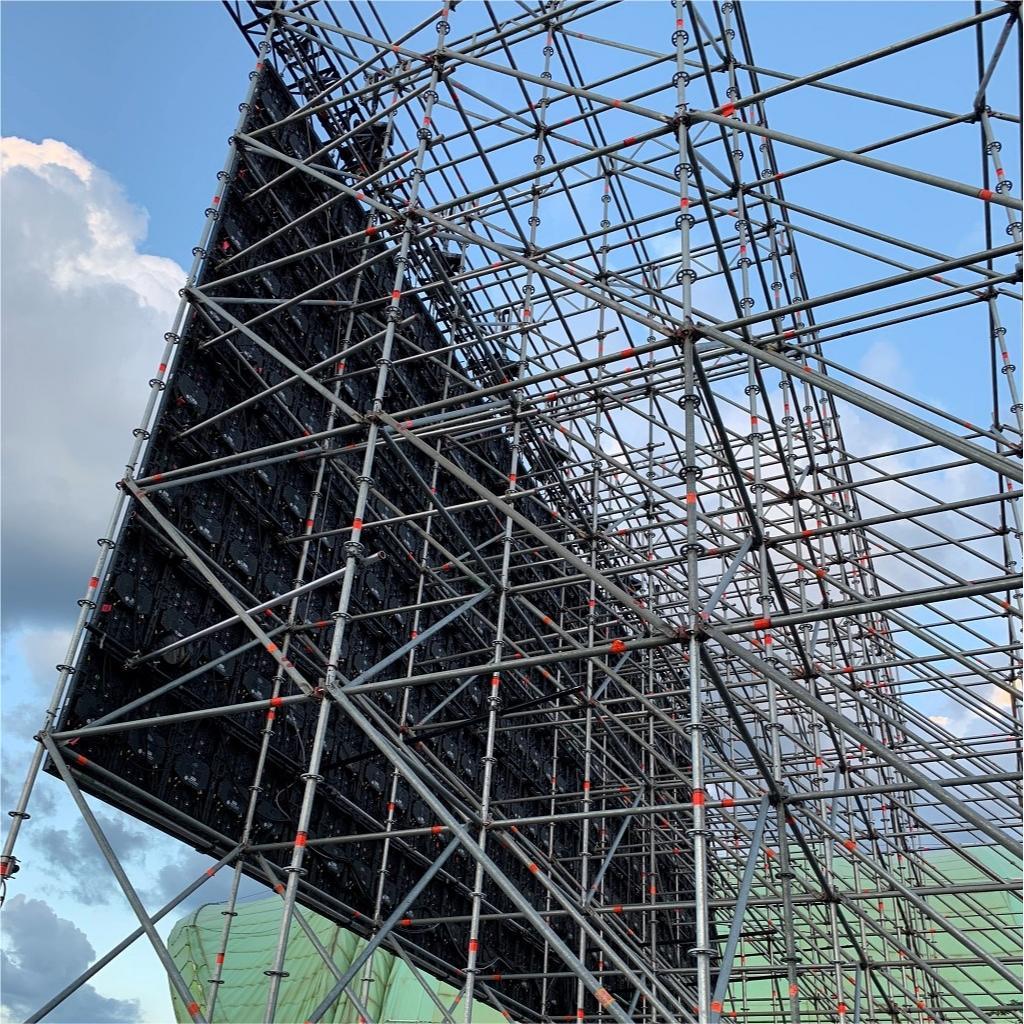
The hanging type installation utilizes specialized bumper-mounted LED screens, suspended from the Layher truss using robust bumpers. This method offers several advantages:
Versatility: Suitable for both indoor and outdoor applications, allowing for flexibility in screen placement and angle adjustment.
Easy Installation: The use of pre-engineered bumpers simplifies the installation process, reducing setup time and labor costs.
Load Distribution: The weight of the LED screen is evenly distributed across multiple bumpers, minimizing stress on the truss structure.
However, there are considerations to be aware of:
Weight Limitations: The maximum load capacity of the Layher truss and individual bumpers should be carefully assessed, especially when dealing with large screens.
Cable Management: Proper cable routing and organization are crucial to maintain aesthetic appeal and ensure safety.
2. Fixing Installation Type: A Secure and Stable Option
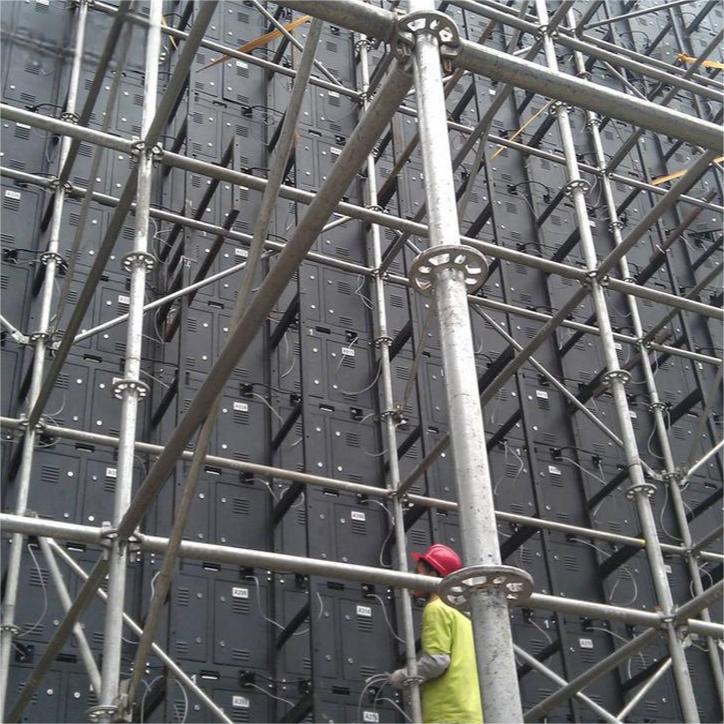
Fixing installation involves attaching the LED screen directly to the Layher truss using specialized mounting parts. This method prioritizes stability and permanence:
High Stability: Direct attachment to the truss structure provides superior stability, ideal for static installations or environments with potential vibration.
Customizability: Allows for precise positioning of the LED screen, facilitating integration with existing structures and achieving specific viewing angles.
Reduced Load on Truss: Distributes the screen's weight directly onto the truss, minimizing the need for additional support structures.
However, this method necessitates:
Precise Measurement: Accurate measurements are critical to ensure correct placement and avoid stress points on the truss.
Pre-Planning: Installation requires careful pre-planning and potentially specialized tools for securing the LED screen to the truss.
3. Stacking & Fixing: A Flexible Approach for Large-Scale Displays
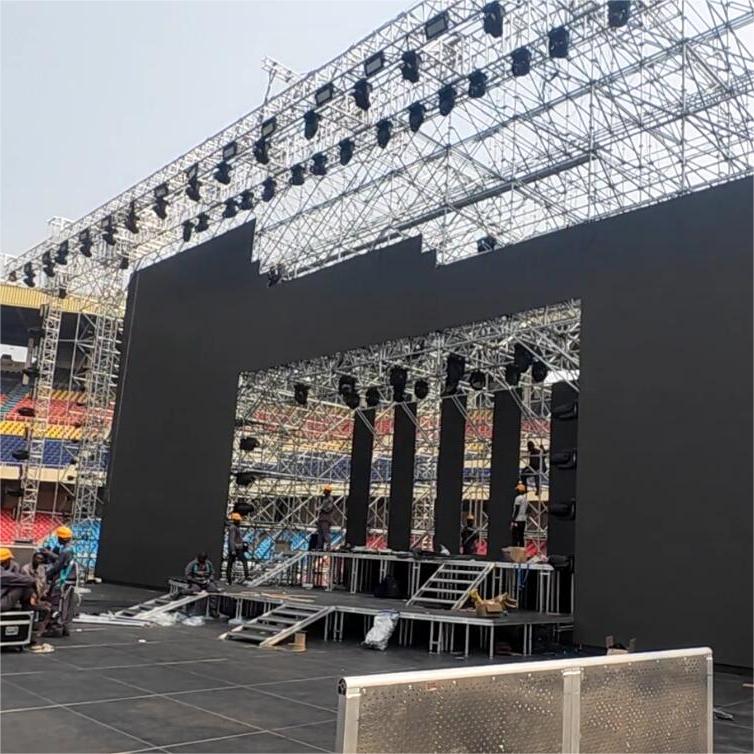
This method involves stacking LED screen modules on a stage platform, and then securely attaching the entire structure to the Layher truss using specialized fixing parts. It presents a practical solution for large-scale displays:
Scalability: Allows for the creation of expansive displays by seamlessly stacking individual modules to achieve the desired size.
Cost-Effective: Leverages existing stage platforms, minimizing the need for additional support structures and reducing material costs.
Simplified Assembly: Modular design simplifies assembly and disassembly, facilitating quick setup and breakdown.
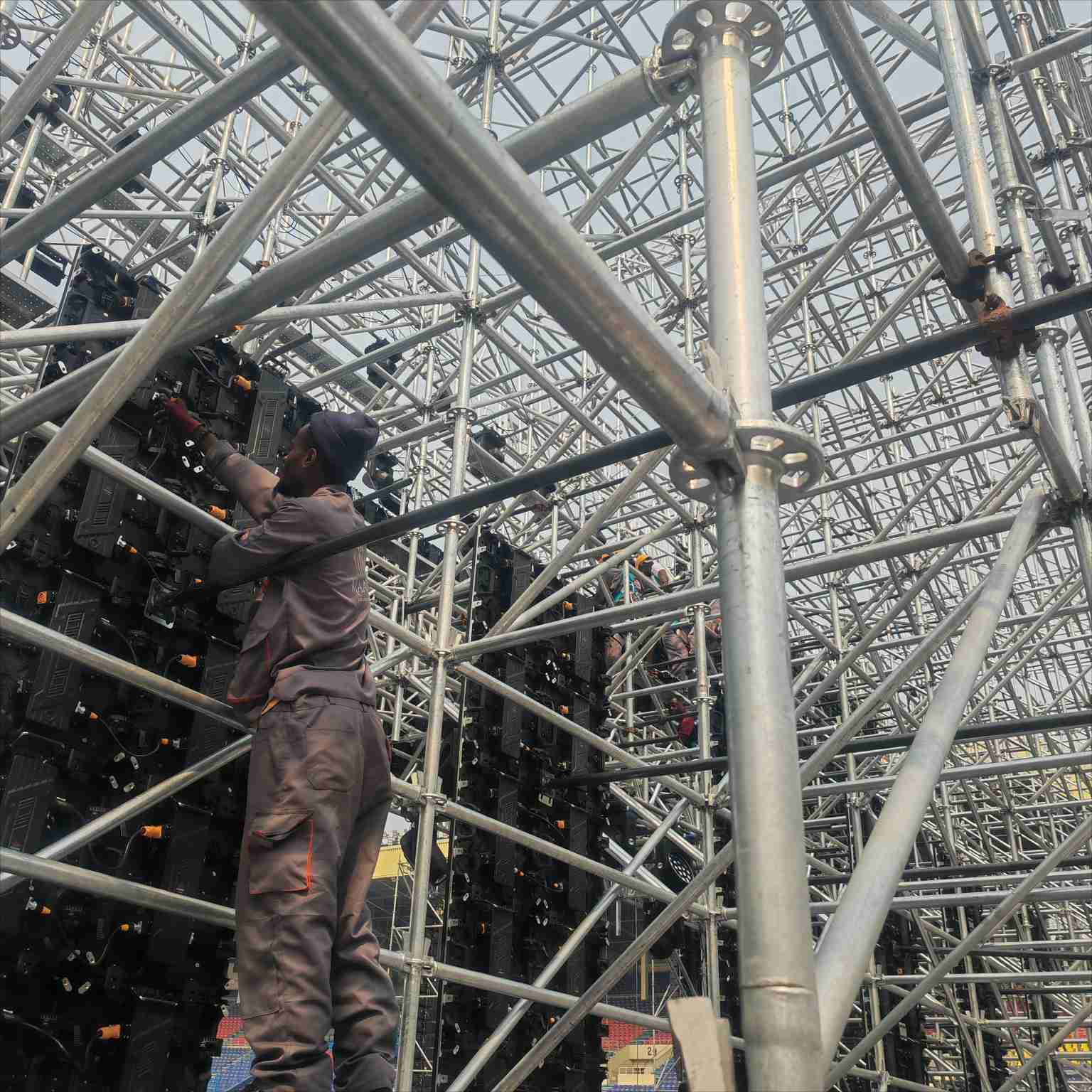
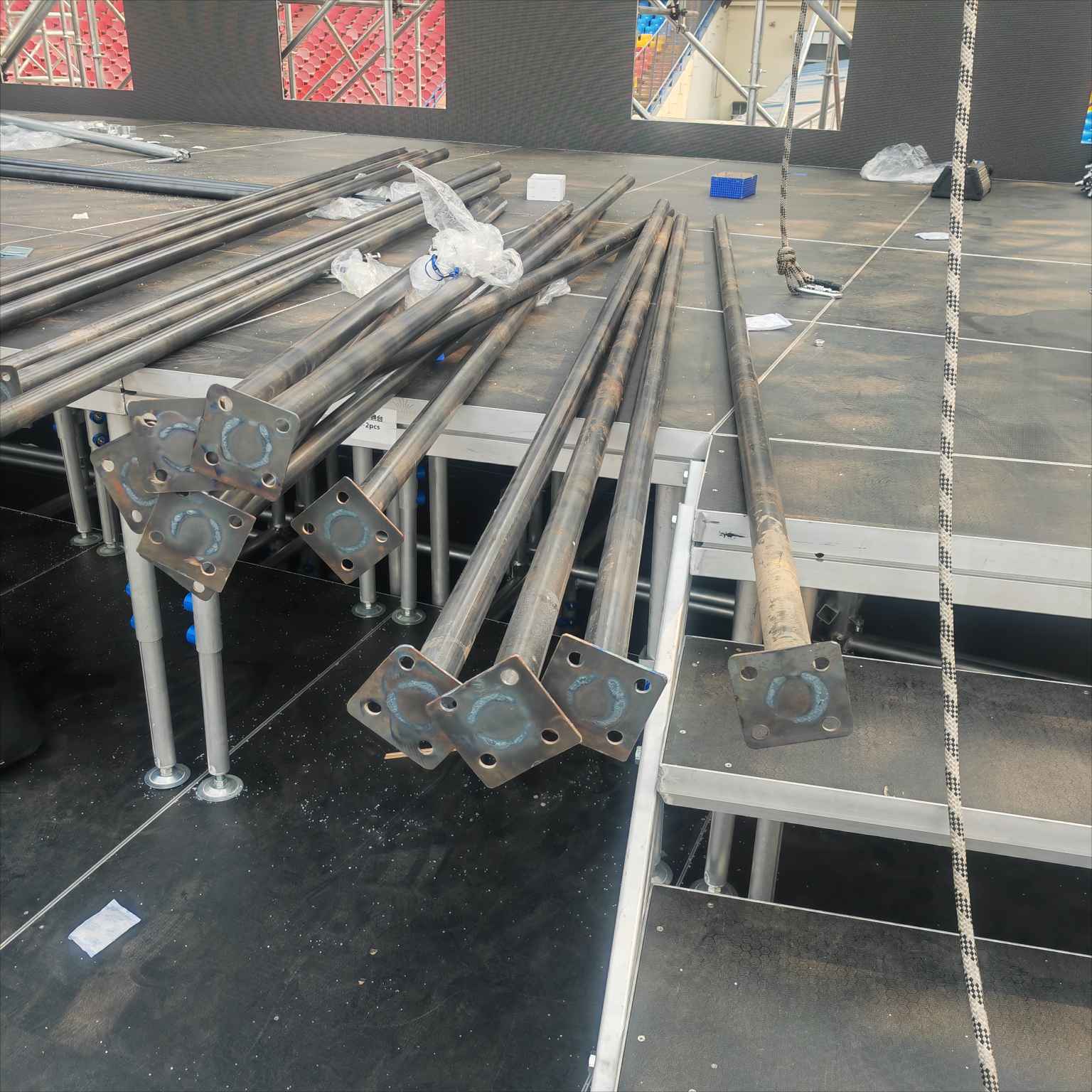
However, considerations for this method include:
Weight Distribution: Careful weight distribution across the stage platform and attachment points is crucial to ensure structural integrity.
Load Capacity: The combined weight of the LED screen and stage platform must be within the load capacity of the Layher truss.
4. Stacking & Hanging: Combining Height and Versatility

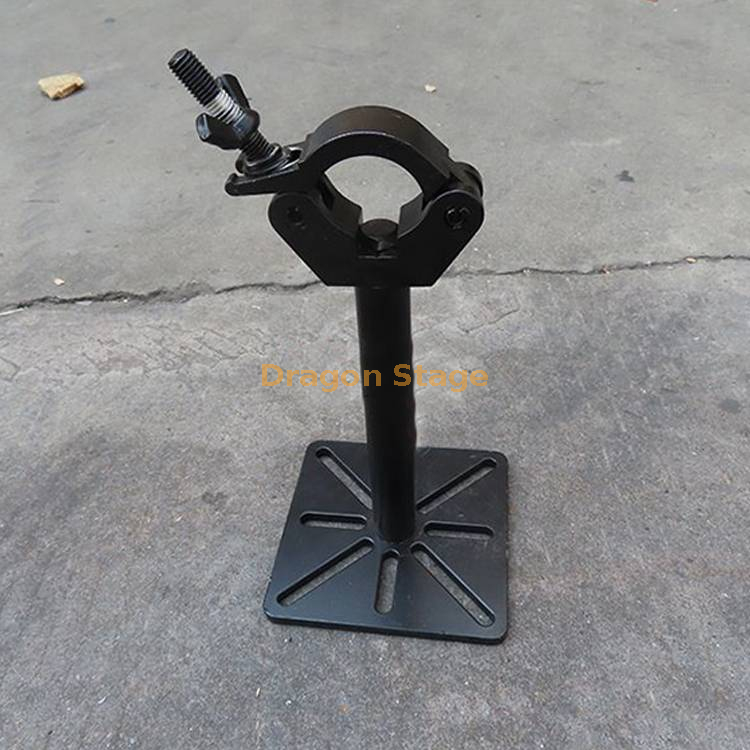
This method combines stacking with a hanging element. The LED screen is stacked on a suspended stage, which is then hung from the overhead Layher truss using bumpers. This offers a unique blend of height and flexibility:
Maximized Visibility: Elevating the LED screen above ground level provides increased visibility and enhances the viewing experience.
Flexibility in Positioning: Allows for precise vertical adjustment of the display, ensuring optimal positioning for different viewing angles.
Reduced Ground Space: Minimizes the footprint required for the installation, making it suitable for locations with limited ground space.
However, careful attention to the following is necessary:
Stability: Maintaining the stability of the suspended stage and the hanging mechanism is paramount, especially in windy conditions.
Weight Distribution: Evenly distributing the weight of the LED screen and stage across the overhead truss is crucial for structural integrity.
Conclusion: Choosing the Right Installation Method
The selection of an installation method for integrating LED displays with Layher truss systems depends on various factors:
Project Requirements: The specific size, weight, and placement requirements of the LED screen.
Budget: Cost considerations, including labor and material costs, play a significant role in the decision.
Environment: Indoor or outdoor applications, as well as potential environmental factors, influence the choice of method.
By carefully evaluating these factors and understanding the characteristics of each method, professionals can select the most suitable approach for integrating LED displays with Layher truss systems, achieving optimal performance and safety for their specific projects.


























